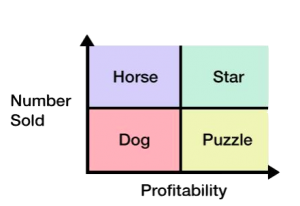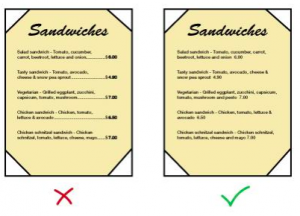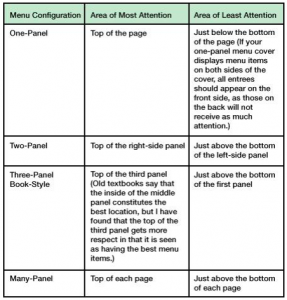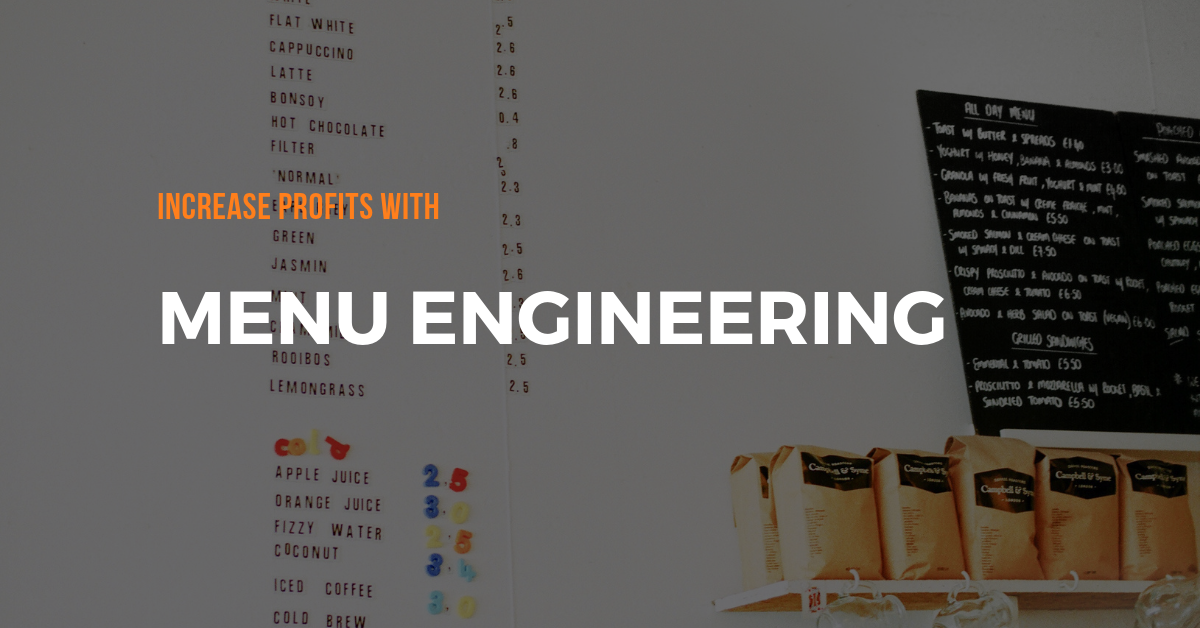Even while online sales skyrocket, you need to maintain both a good in-house menu and online menu to maximize menu profitability.
Menu engineering is the study of the profitability and popularity of menu items and how these two factors influence the placement of items on a menu to increase profitability. The concept of menu engineering is based on research done by Boston Consulting group. It allows restaurants to better organize, analyze, and react to their sales numbers. And, this type of engineering is applicable to virtually all menus; hard-copy and digital.
Opportunity To Improve Menu Profitability
It’s estimated that nearly 60% of all restaurants are NOT doing any menu engineering. And, of the 40% that do, only 10% of them are doing it effectively. This means over 90% of restaurants can easily increase menu profitability (up to 10%-15%) with menu engineering.
Here’s how to start.
The menu engineering process can be broken down into four easy steps:
- Cost your menu.
- Categorize menu items according to profit and popularity levels.
- Design your menu.
- Test your new design.
Costing Your Menu
Costing your menu is the process of quantifying the exact cost of each item on the menu. Although the job can be time consuming, it’s the most important step to get right, as all subsequent decisions are based on the results. Accuracy when costing your menu is critical to success.
Categorize Menu Items According to Profit and Popularity Levels
Split your menu into “categories” and “sections”. Categories being broad, such as appetizers, entrees, and desserts. While categorizing, make sure there is no overlap of food items. Then, break your categories into sections. For instance, in “Entrees”, create sections for seafood entrees, vegetarian entrees, meat entrees etc. These categories and sections should be organized in a spreadsheet.
Place Each Item into One of Four Quadrants
- Stars – High profit, high popularity
- Plow-horses – Low profit and high popularity
- Puzzles – High profitability and low popularity
- Dogs – Low profitability and low popularity

Decide What to Do with Items in Each Quadrant
The decisions you make will be a combination of logic, reason, and intuition. Here’s a guideline for how you should act with the information you have gathered.
- Stars – Highlight your stars
- Plow Horses – Find ways to create more profit with these offerings
- Puzzles – Figure out why these dishes are not performing and adjust as necessary
- Dogs – De-emphasize or omit these items as needed
Design You Menu
Designing your menu involves highlighting the items you want to sell most by using visual cues. These cues can be boxing the text on the menu, picturing the item (informal restaurants only), or placing an asterisk next to it. But, use these techniques sparingly. The more they are used, the less effective they become and the more distracting they will be.
Do not emphasize price. You want to draw as little attention to the numbers and the thought of money as possible. Once customers start thinking about money, their decisions become logic based, not experiential. This can be devastating to your bottom line.
Listing prices as single numbers, without dollar symbols, decimals, or columns is ideal.

Use Item Descriptions Effectively
The more you describe an item, the more attention it gets. So be sure to best describe your “stars”, while minimizing your “dogs”.
Using Menu Configuration to Your Advantage
The idea here is to maximize user experience and owner control, which also leads to better menu profitability.
A two-panel menu, wherever possible, is the best configuration to use. It’s easy to read, and helps induce strong feelings during the dining experience. It also allows you maximum control over the menu and experience.
Fewer pages are less formal and can be limiting, while multi-page menus can be confusing and overwhelming. Find the perfect balance to maximize your menu profitability.
Take Advantage of Eye Movement
The average customer’s eye movement is fairly consistent. Here’s a diagram that shows the most and least popular spaces of your menu. You want to place your stars in the sections of your menu with the greatest attention and vice versa.

Test Your Menu
Once you’ve implemented all your changes, see what the numbers say.
Restaurants that have not yet formalized a menu engineering process have a lot of potential to maximize their menu profitability. They should be able to see significant changes in the performance of their menu.
But as mentioned earlier, this process is ongoing. Continuing to implement the process to make your menu more effective will be a reliable way to increase profit and revenue at your restaurant.


